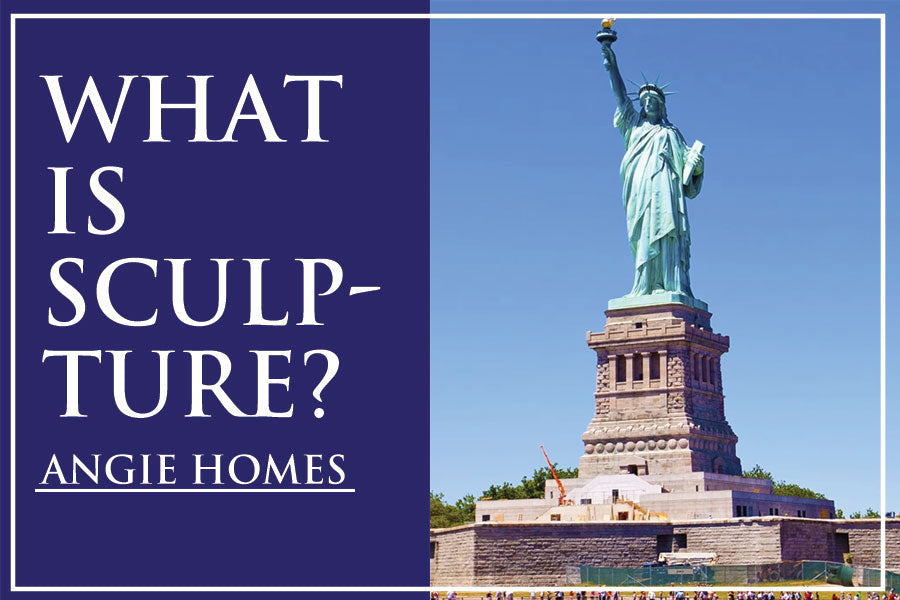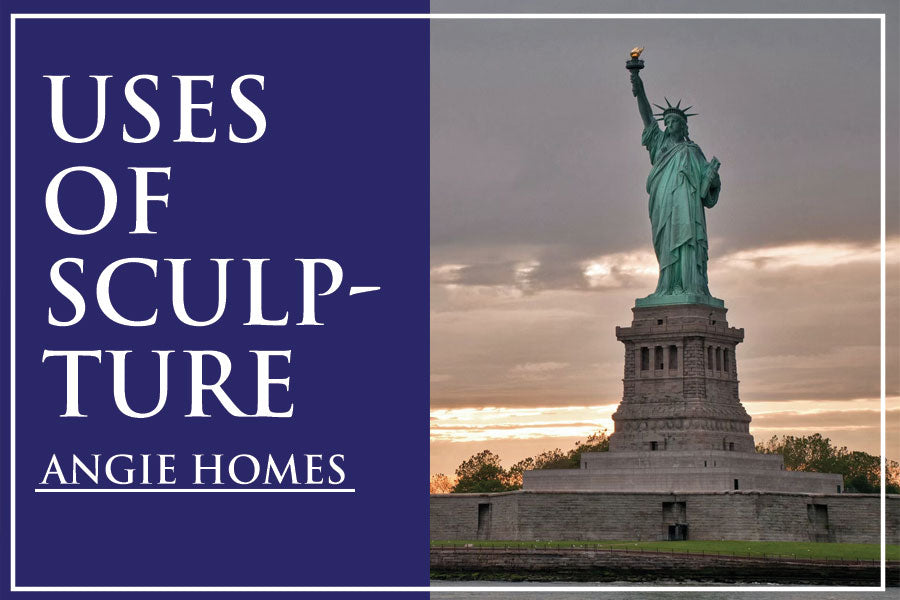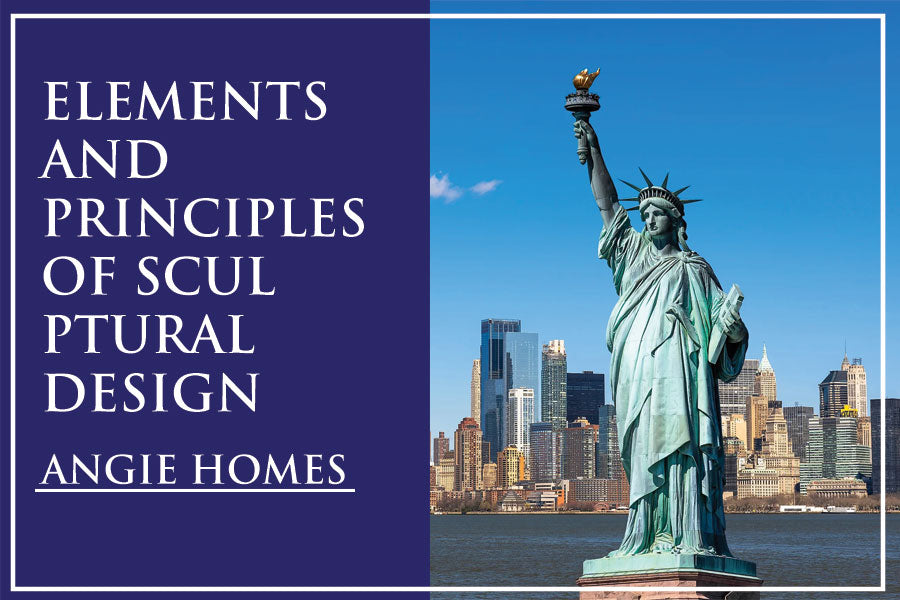Introduction
Sculpture, an age-old form of artistic expression, has transcended centuries to become an integral part of human culture. From ancient civilizations to modern societies, sculpture has adorned public spaces, homes, and museums, leaving an indelible mark on the world of art. In this comprehensive guide, we delve into the diverse facets of sculpture, exploring its definition, historical evolution, types, uses, benefits, and the artistic principles that govern sculptural design.
What is Sculpture?

Sculpture, derived from the Latin word "sculptura," encompasses three-dimensional art forms created by shaping and combining materials. The roots of sculpture can be traced back to ancient civilizations like Mesopotamia, Egypt, and Greece, where it served religious, commemorative, and aesthetic purposes. Over the centuries, sculpture has evolved, adapting to different cultures, materials, and artistic movements.
The evolution of sculpture reflects the changing socio-cultural dynamics of human civilization. From the classical beauty of Greek statues to the expressive forms of Renaissance sculptures, each era brought forth unique styles and techniques. Modern and contemporary sculpture, breaking away from traditional norms, introduced abstract, kinetic, and installation art, pushing the boundaries of artistic expression.
Types of Sculpture

1. Traditional Sculpture
Traditional sculpture adheres to classical techniques and styles, often depicting realistic forms and themes. This category includes iconic works like Michelangelo's "David" and Rodin's "The Thinker," exemplifying mastery in capturing the human form with precision and emotion.
2. Contemporary Sculpture
In contrast, contemporary sculpture embraces experimentation and innovation, encompassing a wide range of materials, styles, and conceptual approaches. Artists like Henry Moore and Louise Bourgeois have challenged traditional norms, creating abstract and thought-provoking sculptures that redefine the boundaries of artistic expression.
Uses of Sculpture

-
Decorative Purposes
Sculptures have been integral to interior and exterior design, adding a touch of elegance and sophistication to spaces. Whether it's a classic marble statue in a garden or a modern abstract piece in a living room, sculpture contributes to the aesthetic appeal of surroundings.
-
Commemorative and Symbolic Uses
Throughout history, sculpture have served as monuments, memorials, and symbols of cultural identity. War memorials, statues of political leaders, and public art installations often carry deep symbolic meaning, commemorating events, people, or ideals.
Benefits of Sculpture

-
Aesthetic Pleasure and Cultural Significance
One of the primary benefits of sculpture lies in its ability to evoke aesthetic pleasure and cultural significance. Sculptures, both traditional and contemporary, contribute to the enrichment of cultural heritage, providing viewers with a visual and emotional connection to the past and present.
-
Therapeutic and Psychological Benefits
Engaging with sculpture can have therapeutic effects, promoting relaxation and stress relief. Art therapy often incorporates sculptural activities to encourage self-expression and emotional healing. The tactile nature of sculpting can also enhance fine motor skills and cognitive function.
Advantage of Sculpture

-
Tangible Expression of Creativity
Sculpture offers artists a tangible medium to express their creativity. The hands-on process of sculpting allows for a direct and physical engagement with the materials, enabling artists to bring their ideas to life in three-dimensional form.
-
Permanence and Endurance
Unlike transient forms of art, sculpture possesses a sense of permanence and endurance. Whether displayed in public spaces or private collections, sculptures have the potential to withstand the test of time, preserving cultural, historical, and artistic legacies.
Elements and Principles of Sculptural Design

-
Form, Space and Balance
The design of a sculpture revolves around fundamental elements like form, space, and balance. Artists meticulously manipulate these elements to create visually appealing and harmonious compositions. The interaction between positive and negative space plays a crucial role in defining the overall aesthetic.
-
Unity, Proportion and Rhythm
Sculptural design adheres to principles such as unity, proportion, and rhythm. Unity ensures that all elements work together cohesively, proportion governs the relationship between different parts, and rhythm introduces a sense of movement and flow within the sculpture.
Top 5 Basic Types of Sculpture

1. Relief Sculpture:
Relief sculpture is characterized by figures or forms that project from a flat background. Commonly found on walls and architectural structures, relief sculpture vary in depth, creating a sense of dimensionality.
2. Free-Standing sculpture:
Free-standing sculpture, also known as statues or sculptures in the round, are fully three-dimensional and can be viewed from all angles. This category includes iconic sculptures like the Venus de Milo and Auguste Rodin's "The Kiss."
3. Kinetic sculpture:
Kinetic sculpture incorporates movement as an essential element. Artists use mechanical or natural forces to create dynamic and interactive sculptures, engaging viewers in a multisensory experience.
4. Environmental sculpture:
Environmental sculpture, also known as land art or earthworks, integrate natural elements and landscapes into the artwork. Artists manipulate the environment, creating large-scale installations that interact with the surroundings.
5. Installation sculpture:
Installation sculpture transforms entire spaces into immersive experiences. Often site-specific, these sculptures engage with the architecture and atmosphere of a location, challenging conventional boundaries between art and its environment.
Top 10 Luxury Sculptures for Home Decor
1. The Elegance of Bronze:
Bronze sculptures, known for their timeless beauty and durability, add a touch of opulence to home decor. From classical figurines to contemporary abstract pieces, bronze sculpture exudes sophistication.
2. Marble Masterpieces:
Marble sculpture, with their classical aesthetic, brings a sense of grandeur to interiors. White Carrara marble, in particular, is revered for its purity and elegance, making it a popular choice for sculptors.
3. Contemporary Art Sculptures:
For those seeking avant-garde home decor, contemporary art sculpture offers a diverse range of styles and materials. From abstract forms to unconventional designs, these sculptures make bold statements.
4. Crystal and Glass Sculptures:
Crystal and glass sculpture illuminate spaces with their transparency and refractive qualities. These luxurious sculptures capture and play with light, adding a touch of glamour to any room.
5. Wooden Wonders:
Wooden sculpture, with their warm and natural appeal, creates a harmonious connection with the environment. Sculptors often showcase the beauty of wood grain and texture in their creations.
6. Abstract Expressions:
Abstract sculpture, characterized by non-representational forms, invites viewers to interpret and engage with the artwork on a subjective level. This sculpture often serves as conversation pieces, sparking discussions about art and creativity.
7. Sculptures with Functional Design:
Some luxury sculpture combine art with functionality, serving as both aesthetic elements and practical items. Examples include sculptural furniture pieces that seamlessly blend art and utility.
8. Limited Edition Sculptures:
Limited edition sculpture, crafted in small numbers, appeals to collectors seeking exclusivity. These pieces often carry a signature style or feature unique materials, making them coveted additions to luxury home decor.
9. Custom-made Sculptures:
For a truly personalized touch, custom-made sculpture allows homeowners to collaborate with artists in creating bespoke artworks tailored to their preferences and interior aesthetics.
10. Interactive and Tech-Integrated Sculptures:
In the age of technology, sculpture with interactive and tech-integrated elements brings a modern twist to home decor. These sculptures may incorporate lights, sound, or interactive components, adding a dynamic and futuristic dimension.
Luxury Sculptures Online at Angie Homes
-
An Exclusive Collection
Angie Homes, a premier online destination for luxury home decor, offers an exclusive collection of sculpture curated for discerning clientele. From classic to contemporary, their range showcases the finest craftsmanship and artistic expression.
-
The Convenience of Online Sculpture Shopping
With the convenience of online shopping, Angie Homes brings luxury sculpture directly to your doorstep. The online platform provides a seamless and secure shopping experience, allowing art enthusiasts to explore and acquire exquisite sculptures from the comfort of their homes.
Materials Used to Make Sculptures
-
Traditional Sculpture Materials
Traditional sculpture materials include stone, wood, clay, and metal. Each material carries its own set of challenges and possibilities, influencing the artist's creative process and the final aesthetic of the sculpture.
-
Contemporary and Experimental Materials
Contemporary sculptors often explore unconventional materials like plastics, found objects, and even recycled materials. These experimental approaches push the boundaries of traditional sculpture, challenging perceptions and inviting new interpretations.
Conclusion
In conclusion, sculpture stands as a timeless and multifaceted art form that has evolved through centuries, reflecting the dynamic nature of human expression. From the classical beauty of traditional sculpture to the avant-garde experimentation of contemporary artists, the world of sculpture continues to captivate and inspire. As we explore the diverse types, uses, and benefits of sculpture, it becomes evident that this art form goes beyond mere aesthetics, serving as a powerful means of communication, cultural preservation, and personal enrichment.
Through this comprehensive guide, we have delved into the elements and principles that govern sculptural design, explored the various types of sculptures, and highlighted the luxury and customization options available for home decor. As we appreciate the permanence and endurance of sculptures, we also embrace the technological advancements that have made luxury sculptures accessible through online platforms like Angie Homes.
Whether you are a seasoned art enthusiast or a newcomer to the world of sculpture, this guide aims to provide a deeper understanding and appreciation for the art form. As sculptures continue to shape our physical and cultural landscapes, they invite us to contemplate, connect, and celebrate the boundless possibilities of artistic expression.
FAQ's
Q. What is the definition of a sculpture?
Ans: Sculpture is a three-dimensional art form created by shaping or combining materials, such as stone, wood, metal, or clay, to produce a tangible and often aesthetically expressive object. It involves manipulating and carving materials to convey artistic ideas, emotions, or representations of the human form, nature, or abstract concepts.
Q. What is known as sculpture?
Ans: Sculpture is known as the art of creating three-dimensional forms through the manipulation and shaping of materials. It encompasses a broad range of artistic expressions, from traditional statues and reliefs to contemporary and experimental installations, reflecting the evolution of human creativity over time.
Q. What is sculpture Class 6?
Ans: In a class 6 sculpture context, students typically learn about the basic principles and techniques of sculpture as part of their art education. This may include hands-on activities, introducing them to various materials and sculpting methods, fostering creativity, and providing a foundational understanding of the art form.
Q. Why is it called sculpture?
Ans: The term "sculpture" is derived from the Latin word "sculptura," which means carving or shaping. The name reflects the fundamental process involved in creating sculptures—manipulating materials to shape and form three-dimensional objects. The term has endured through history as a descriptor for this expressive and tangible art form.
Q. What is introduction to sculpture?
Ans: An introduction to sculpture involves acquainting individuals with the fundamental concepts, history, and techniques of sculpting. It encompasses understanding different types of sculpture, materials used, and the role of sculpture in artistic expression. This introduction serves as a gateway for individuals to explore and appreciate the diverse world of three-dimensional art.
Q. What is sculpture anyway?
Ans: A sculpture encapsulates the open-ended nature of sculpture. It is a multifaceted art form that defies easy categorization. Sculpture can be traditional or contemporary, figurative or abstract, created from various materials, pushing boundaries and challenging perceptions. The question reflects the ongoing exploration and evolution of sculpture as a dynamic and ever-changing artistic expression.
Q. What different materials are sculptures made from?
Ans: Sculptures can be crafted from a variety of materials. Traditional materials include stone, wood, clay, and metal. Contemporary and experimental sculptures may incorporate plastics, found objects, or recycled materials. Each material offers unique possibilities, influencing the sculptor's creative choices and contributing to the overall aesthetic and meaning of the artwork.
Q. What sculptures can we find at Angie's India?
Ans: Angie's India offers a curated collection of luxury sculptures. This includes bronze sculptures, marble masterpieces, contemporary art sculptures, crystal and glass sculptures, wooden wonders, abstract expressions, sculptures with functional design, limited edition sculptures, custom-made sculptures, and interactive and tech-integrated sculptures. Angie's India caters to discerning clients seeking exquisite and unique pieces for home decor.
Q. How to clean my sculptures?
Ans: Cleaning sculptures requires a delicate approach. Dust can be gently removed using a soft brush or cloth. For more thorough cleaning, mild soapy water and a soft sponge can be used, followed by careful drying. Specific cleaning instructions may vary based on the sculpture's material, so it's essential to refer to any provided care guidelines or consult with experts to ensure the preservation of the artwork.
Q. How sculptures are packed for shipping?
Ans: Sculptures are meticulously packed for shipping to prevent damage during transit. This involves secure packaging with materials such as bubble wrap, foam padding, and custom crates. Fragile areas are often reinforced, and sculptures are positioned to minimize movement. For valuable or delicate sculptures, professional art handlers may be employed to ensure the artwork's safe arrival at its destination. The packing process is tailored to the sculpture's size, material, and fragility to guarantee protection during transportation.
